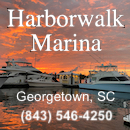BoatUS: Fix the Ethanol Mandate Petition

BoatU.S. needs your help with a petition to the new Administration and Congress to protect your boat’s engine. Please take a moment to help us send a strong message that it is time for the broken renewable fuel/ethanol policy to be fixed.
Fix the Ethanol Mandate
The 12-year-old Renewable Fuel Standard (RFS) is a federal law that forces more ethanol into the nation’s gasoline supply. The only way to meet this government mandate is to add more ethanol to gasoline, beyond the current widespread 10% level, or E10 blend.
The current RFS policy is trouble for boaters:
Gasoline with more than 10% ethanol has been shown to damage boat engines A study by the National Renewable Energy Laboratory conclusively demonstrated that E15 damages boat engines. As the RFS forces E15 and higher blends into the market, the chance of harming your boat’s engine increases.
You could put the wrong fuel in your boat While gas blends with more than 10% ethanol are prohibited for use in recreational boats under federal law, a 2016 Harris Poll found that 64% of consumers were not sure or did not pay attention to the type of gas they used. Pumps dispensing blends greater than 10% ethanol are only required to display a small orange warning sticker raising the chance of misfueling your boat.
Higher ethanol blends are becoming more common E15 and higher ethanol blends can now be found in at least 23 states, often at the very same roadside gas pumps dispensing E10 fuel. With only the one warning label, boaters have to be extra vigilant to prevent misfueling with engine damaging ethanol blends.
You could face big repair bills 87% of readers of a prominent boating industry publication reported seeing customers with engine damage caused by ethanol. While modern marine engines are designed for E10, higher ethanol blends of 15%, 20% and even up to 85% ethanol, will cause even more damage to boat engines.
Can you count on your engine when you need it? Boat engines that are unreliable due to ethanol issues are a safety concern for every boater. When the weather turns and you need to count on your engine, there should be no question whether it will get you home.
Gas without any ethanol is becoming harder to find The RFS arbitrarily limits the supply of ethanol-free gasoline (E0), a fuel that many boat owners prefer to protect their engine.
BoatU.S. is calling on the new Administration and Congress to reform this broken government mandate and make certain there is gas available that will not damage your boat. Use the link below to add your voice:
Fix the Ethanol Mandate
The Renewable Fuel Standard (RFS) is a law passed in 2005 that requires the blending of biofuels such as corn-ethanol into our gasoline. To keep up with this mandate, in 2010 the EPA permitted E15 (fuel containing up to 15% ethanol) into the marketplace, but only for some automobile engines. E15 is prohibited to use in marine engines. It is also prohibited to use E15 in snowmobiles, motorcycles, small engines like lawnmowers and leaf blowers, as well as any car or light-truck made before 2001. Click here for more information on the Renewable Fuel Standard.
Thanks for being a BoatU.S. member and for taking action to tell the new Administration and Congress how more ethanol in gas will affect you.
Sincerely,
David Kennedy
BoatU.S. Government Affairs
(703) 461-2878 x8363









 Staniel Cay Yacht Club, a favorite destination for cruisers in the Exumas, has always been most accommodating for its guests and word of such exceptional service for cruisers spreads like a wind driven wild fire. A loyal SALTY SOUTHEAST CRUISERS’ NET SPONSOR, Staniel Cay Yacht Club offers an exciting end-of-year schedule of events!
Staniel Cay Yacht Club, a favorite destination for cruisers in the Exumas, has always been most accommodating for its guests and word of such exceptional service for cruisers spreads like a wind driven wild fire. A loyal SALTY SOUTHEAST CRUISERS’ NET SPONSOR, Staniel Cay Yacht Club offers an exciting end-of-year schedule of events!










Be the first to comment!